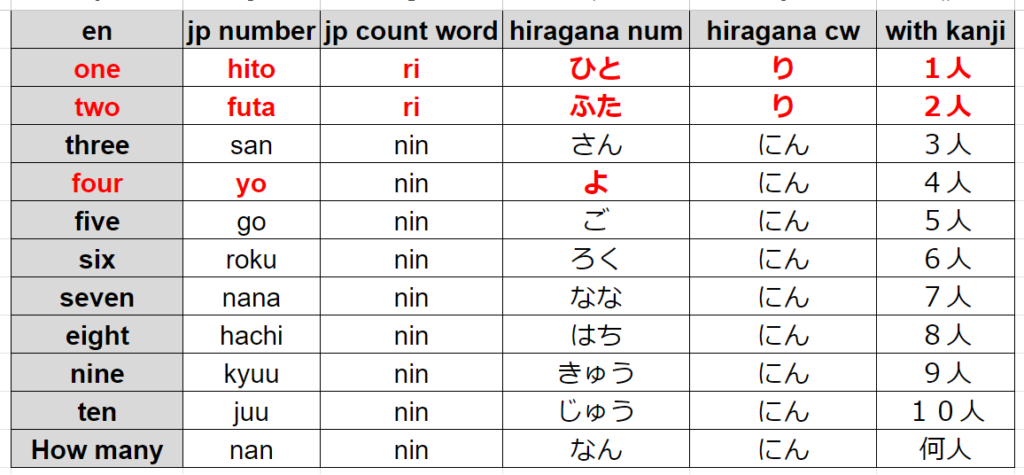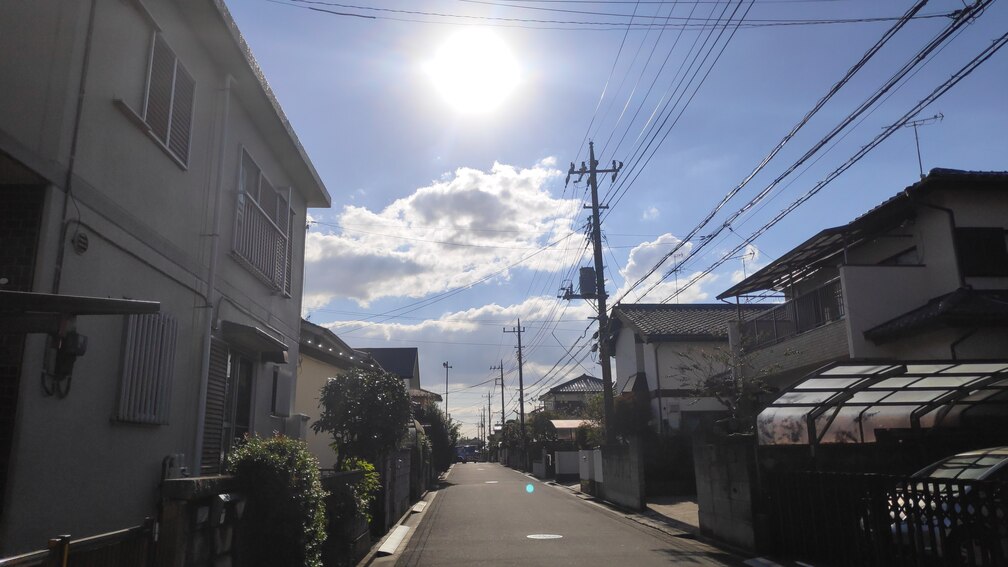
How can I say in Japanese that there are 100 people in a room?
Summary of Counter Suffixes
In short, counter suffixes area must when clarifying the number:
- They come before the verb (usually).
- They come before a noun with the particle の (no) (literally).
- These are the points to keep in mind.
For the basics of counter suffixes in Japanese, please see: xxxxxxxxxx
人 (ri, nin) for person (people)
Person
a counter suffix
人: ri, nin
is used (yes, there are two ways of reading for this aim).
Here is the list of how to say when 人(ri, nin) is combined with numbers:

As you can see, when you count “a person” and “two people”, “RI” is used.
- 1人 (hito ri)
- 2人 (huta ri)
*Otherwise”NIN”
For example,
学校に友だちが2人います。
gakkoo ni tomodachi ga hutari i masu.
I have 2 friends at school.
A:
部屋に何人いますか。
heya ni nan nin i masu ka.
How many people are there in the room?
B:
100人います。
hyaku nin i masu.
There are 100 people.
*As 人(ri, nin) signifies “person (people)”, you don’t need to clarify “人 (hito) = human” as the subject if it is not strongly required.
In total (for person)
When talking about the totality of people,
In total:
全員で
zen in de
*rather formal
みんなで
minna de
are usually used.
For example,
明日のパーティーに全員で何人来ますか。
ashita no paatii ni zen in de nan nin ki masu ka.
How many people will come to tomorrow’s party?
明日のパーティーにみんなで何人来ますか。
ashita no paatii ni minna de nan nin ki masu ka.
How many people will come to tomorrow’s party?



Comment